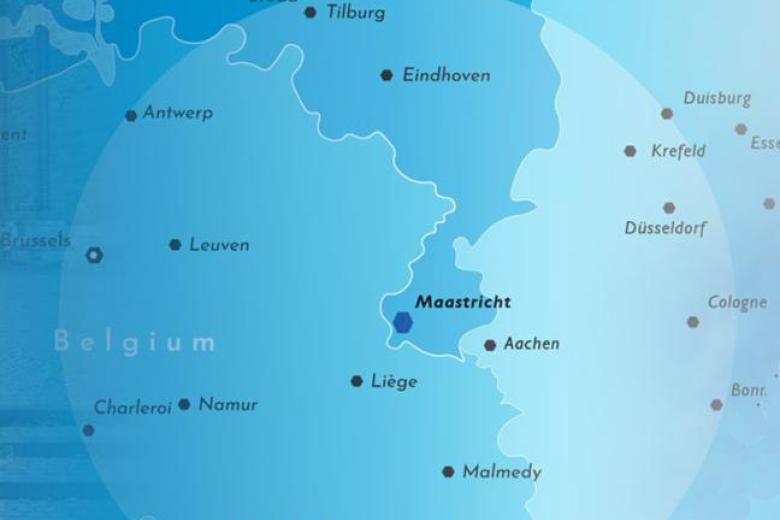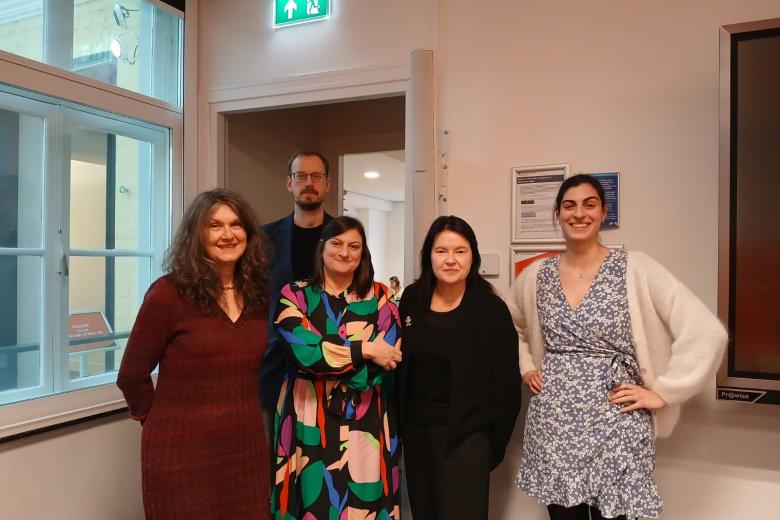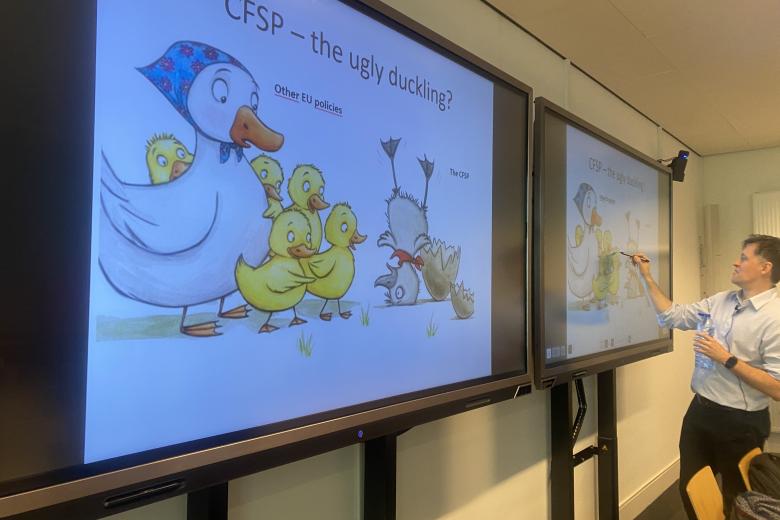Discovering new species, just like Darwin
Why do 35% of all plants in the world grow in tropical rainforests in South America? And why are there no palm trees in African rainforests, while there are in South American ones? Evolutionary biologist Roy Erkens of Maastricht University hopes to solve a piece of this puzzle with his research.
He is sometimes called the ‘Freek Vonk of the south’. And indeed, he talks just as enthusiastically about his work as Freek does and, like the famous Dutchman, knows how to explain it so that everyone can understand. Only this biologist doesn’t focus on animals but on plants, and on one plant family in particular: the Annonaceae (pronounced ‘annonasee’, with the emphasis on the end). This soursop ‘soursop family' from the tropics has at least 2500 species, just like the winter oak and the summer oak are two species of oak tree. Erkens obtained a PhD on this topic at Utrecht University and is still researching it. “I’m primarily trying to fully understand the evolutionary history of one group within the Annonaceae, to serve as a model for the evolution of the rainforest. This group is called Guatteria and consists of about 180 species. Where all those tropical forests come from, why there’s such an enormous diversity of plants there: we really don’t know much about that.” Factors such as temperature and humidity are most likely important, but why that temperature leads to more plants, the mechanism behind it, isn’t yet known. “We know a lot of things, but in reality also very little.”
New genetic techniques
Why the 180 species of Guatteria are found in Central and South America is therefore still a mystery, as is their mutual relationship. “Thanks to new genetic techniques, we can now make family trees of plants. I collect leaves from the rainforest; we get DNA from them; then we find out, for example, that not all Guatteria in Central America are related to each other.” If you then include the fossil pollen of these plants, there is a theory that a part of the plant group ‘blew’ over from Africa 50-60 million years ago. “Fifty-five million years ago there was a land bridge between Europe and America, and because seeds always go a little further, a plant can migrate. I think that a number of plants got to Central America just in time to establish themselves ,while they were dying out in Europe because the climate changed.”
Pollen is reliable
But because this theory is still based on little data, Erkens and his colleagues are looking for more evidence. “There are fossils, but I don’t trust them. Leaf prints in stone are difficult to identify. Pollen research is more reliable. Pollen has a very hard exterior, which becomes fossilised. If you collect pollen from a layer of earth from ten million years ago, the plant must have been there at that time. That’s the most commonly used technique to trace this migration route.”
It should be clear that Erkens is particularly interested in the origin of species and their spread across the earth—the same thing that evolutionary biologist Charles Darwin studied almost two hundred years ago. “Sometimes you come across his handwriting in herbariums, which are collections of dried leaves stuck on a paper and described by the finder. That’s great, isn’t it—how close you can get to the story of those explorers?”
Primal feeling
His own name is also immortalised in these types of collections this way, because Erkens has discovered 13 species of trees, which he was also able to name. “Most new species are no longer discovered in the forest, but in collections of herbaria. Because you’re a specialist on a certain group, you recognise things that don’t fit into the species that we know. You compare it with what is known and then you find out that it doesn’t have a name yet. That gives me a really primal feeling: ‘This is new; nobody has seen this yet!’. Then you can give it a name—not after yourself, but after someone else; there are all kinds of rules. Usually you use the place where it was discovered or a well-known person, or someone who has helped a lot, or a characteristic. Guatteria megalophylla, for example, has very large (mega) leaves (‘phyllen’). If you give a new name and describe a species, your name will always be connected to the species, forever. That’s the best way to contribute to science.”
Understanding forests
Erkens regrets that many species become extinct without ever being known. “Everything is connected to everything in nature, though we don’t really understand yet what biodiversity is and how it works. But if you want to protect a region of the Amazon, you need to know how it works. Those forests are important for clean air, for example, which immediately affects us. Bees are important for our food supply. At the same time, the effects of the extinction of the panda are not noticeable to us as people. I also find the question of how much biodiversity we can miss very interesting. But we do know that many problems in nature have an impact on people. So, I think it’s very pertinent to understand the forests.”
Red List
Erkens is also in a working group of the Union for Conservation of Nature, the world's largest and oldest nature conservation union, which creates the 'Red List' of the threats to all species on earth, from elephants to plants. “Fifty per cent of my own plant group are threatened.”
Since he works in Maastricht, for the Maastricht Science Programme, he does more teaching and also makes a lot of public and media appearances. For example, he is the house biologist for the L1 programme ‘Avondgasten’. “I hope that people will start thinking about their environment. Most students find plant biology a little boring at first, but after my botany course, they suddenly see things they didn’t see before. Seeing something in the world that you didn’t see at first—how fantastic is that?”
Roy Erkens (1976) studied Biology at Utrecht University, where he got his PhD in 2007 on Guatteria, members of the Annonaceae plant family in the tropics. Together with others, he wrote a standard reference on this group of species, which replaced the previous one from 1939. In 2012, he returned to his birthplace of Maastricht to help set up the Maastricht Science Programme. Here, he teaches evolutionary biology and plant biology.
In 2013, he gave five (Dutch) lectures for the Universiteit van Nederland. You can find them at www.universiteitvannederland.nl by searching for Roy Erkens.
Also read
-
DigiMach places Meuse-Rhine Euroregion at the heart of industrial digitalisation
DigiMach (Digital Machining) is a new cross-border project uniting Belgium, Germany, and the Netherlands around a common goal: accelerating the digitalisation of the machining industry in the Meuse-Rhine Euroregion.
-
Globalisation & Law Network seminar with Áine Ryall
On 24 November 2025, the Globalisation & Law Network, together with the Institute for Globalisation and International Regulation (IGIR) held the seminar with Professor Áine Ryall.
-
Guest Lecture: Lóránt Havas explores current challenges in the EU’s CFSP
Lóránt Havas delivered a guest lecture on the EU’s evolving CFSP, discussing key legal developments, institutional challenges, and new defence instruments.